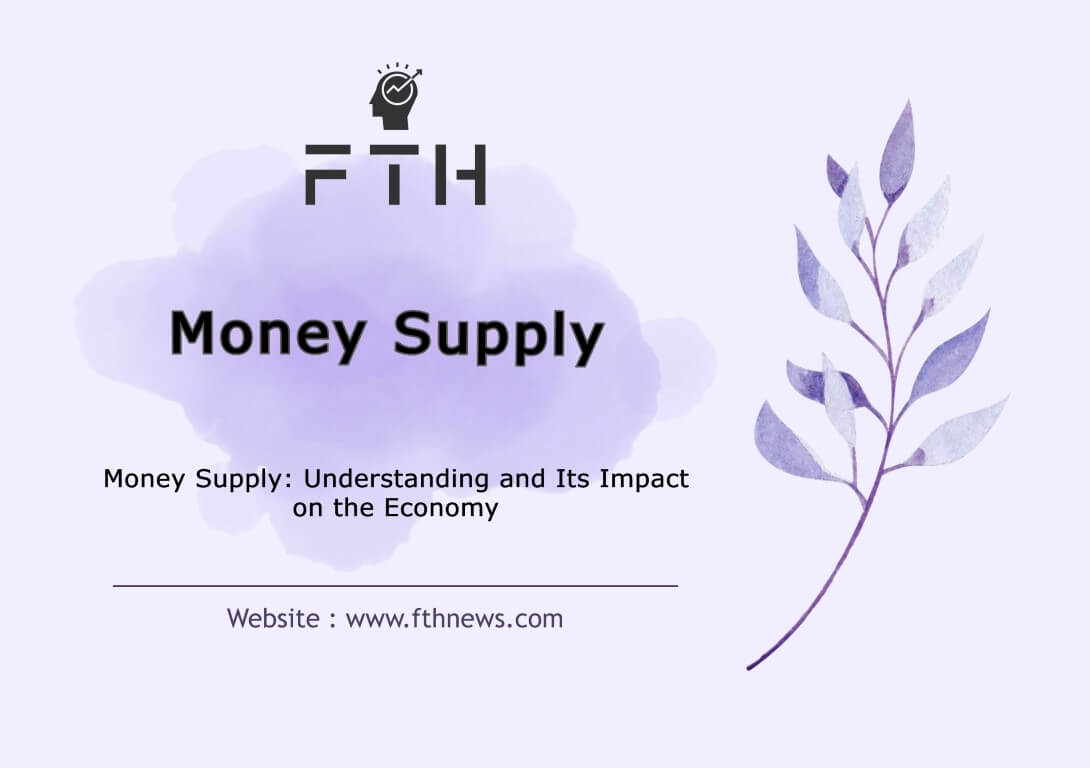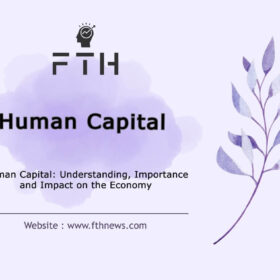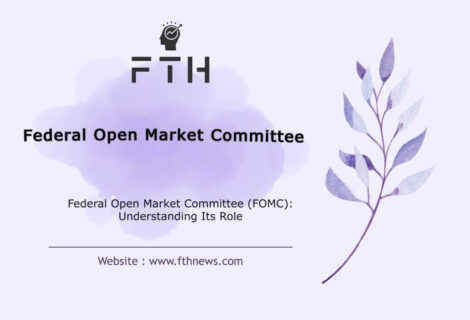
Money Supply: Understanding and Its Impact on the Economy
Money Supply encompasses the liquidity and cash equivalents within a country over a specific period. It stands as a pivotal metric influencing monetary policy decisions and steering macroeconomic performance. In this article, we’ll delve into the concept of money supply, exploring its varied definitions and significant role in economic dynamics.
What Exactly is the Money Supply?
Money supply denotes the aggregate sum of currency in circulation within a country. This encompasses coins, printed notes, funds in deposit accounts, and other liquid assets. Crucially, it serves as a predictive indicator for a nation’s economic trajectory, intimately tied to macroeconomic variables like inflation and interest rates. Moreover, it stands as a primary instrument for implementing both contraction and expansionary monetary policies.
Valuation and analysis play a pivotal role in guiding economists and policymakers, influencing policy adjustments as required. These evaluations hold immense significance in the economic landscape, significantly shaping business cycles and the overall national economy. Each country’s central bank periodically releases data based on their determined monetary classifications.
Global perspectives on money offer varied definitions, broadly categorized into four criteria:
- M0 Criterion
- M1 Criterion
- M2 Criterion
- M3 Criterion
Though not all these classifications are universally adopted, different countries may utilize distinct categorizations. The classifications of money supply encapsulate diverse forms of liquidity associated with each money type in the economy. As we progress from narrower definitions like M0 towards broader categories such as M3, the breadth of the money supply expands accordingly. This widening range reflects the various types of liquidity tied to each classification of money in the economy.
Understanding the Different Criteria of Money Supply
This tiered approach to classifying money supply provides a spectrum from the most immediate and liquid assets to a broader representation that encompasses longer-term financial instruments and borrowings.
M0 Money Supply:
M0 stands as the most fluid and narrowest representation of the money supply. It encompasses all physical coins and paper currency actively circulating within the economy.
M1 Money Supply:
Referred to as “narrow money,” M1 comprises coins, bills in circulation, and other easily convertible monetary equivalents. This classification primarily serves the facilitation of essential transactions and the provision of immediate liquidity. In essence, M1 equals M0 along with visual deposits.
M2 Money Supply:
Expanding the scope, M2 encompasses M1 and extends to include short-term deposits held in banks and certain money market funds. This broader measure represents a wider view of the readily accessible money supply. In mathematical terms, M2 comprises M1 plus short-term deposits.
M3 Money Supply:
M3, known as “broad money,” encapsulates M2 and goes further to involve deposits with contractual maturities exceeding one year within the banking system. Additionally, it includes long-term borrowings via telephone from non-depository financial institutions by the banking system. Therefore, M3 equals M2 in addition to deposits with contractual maturities over a year.
Effects of Money Supply on Economic Dynamics
The effects of money supply on the economy are multifaceted and pivotal:
Inflation and Deflation:
Alterations in the money supply can directly impact the price levels within an economy. An excessive increase in the money supply, without a corresponding increase in goods and services, can lead to inflation. Conversely, a reduced money supply can trigger deflation, decreasing prices but potentially hindering economic growth.
Interest Rates:
Fluctuations in the money supply directly influence interest rates. An increased money supply often leads to reduced interest rates, stimulating borrowing and spending. Conversely, a restricted money supply triggers higher interest rates, limiting spending and investments.
Economic Growth and Employment:
A balanced money supply can foster economic growth by encouraging investment, production, and consumer spending. However, excessive or inadequate money supply can disrupt this equilibrium, potentially leading to economic downturns, unemployment, and reduced productivity.
Exchange Rates and International Trade:
Changes in money supply affect exchange rates, impacting a country’s competitiveness in international trade. A higher money supply can potentially lead to a weaker currency, boosting exports but making imports more expensive, and vice versa.
Stability and Confidence:
A stable and predictable money supply is crucial for maintaining confidence in the economy. Sudden fluctuations or mismanagement can erode trust, impacting investment and consumer behavior.
In essence, the quantity of money circulating in an economy significantly influences various economic facets, making it a crucial factor in economic policy and stability.
Factors Influencing Money Supply
Monetary policy, a critical tool wielded by central banks, aims to sustain economic stability and growth. Among its primary challenges is managing inflation, a situation where abnormally high demand clashes with stagnant supply, artificially inflating prices.
The consequences of hyperinflation can be catastrophic, eroding consumers’ purchasing power when prices soar but wages remain static. This imbalance can swiftly spiral into an economic downturn. Conversely, deflation triggers its own cycle of challenges, such as amplified unemployment and increased bankruptcy rates.
Monetary policy intervenes to regulate inflation by maneuvering money supply targets and interest rates. A high money supply typically triggers reduced interest rates. These lowered rates prompt heightened consumer spending and increased investment, effectively stimulating the economy. In contrast, a low money supply results in elevated interest rates, which subsequently dampen consumer spending and investment. A prolonged increase in interest rates carries the risk of plunging the economy into a severe recession.
The delicate balance of money supply and interest rates forms the core strategy of monetary policy in steering economic conditions, aiming to maintain a stable and growing economy while curbing the threats of inflation and deflation.
The Money Supply Process: A Multi-Step Journey
The supply of money, like any societal resource, undergoes a series of steps and processes. It’s important to note that money supply encompasses more than physical banknotes and coins—it extends to encompass deposits, money creation, supply, and consumption. This process involves not only physical currency but also the complex interplay of credit, further enriching the dynamics.
This process can be divided into two key segments: the first part, pertaining to the creation of physical currency and coins, is the exclusive domain of governing institutions. However, the second part, money creation, also involves banks.
Money Creation and Lending
The creation of money becomes a pivotal stage in the money supply process. After accepting deposits, banks leverage these funds to extend loans in various forms, generating money based on the necessary loan amounts.
For every deposit received, banks retain a portion, typically 10%, to meet depositors’ requirements and circulate the remaining 90%. This surplus is offered as loans to individuals, accompanied by interest. This lending process fundamentally fosters money creation, under the oversight of the central bank, ensuring a balanced money supply.
Maintaining Money Supply Balance
The central bank plays a critical role in upholding the equilibrium of the money supply by enabling bank lending. Two primary forms of lending—individual and institutional—contribute significantly to this balance. These lending activities, irrespective of any imposed conditions, sustain the equilibrium in the money supply. Corporate and institutional lending enables the expansion of production, subsequently increasing the demand for labor.
This fosters further investment opportunities, while individual lending stimulates demand for investment. This collective interplay aids in maintaining equilibrium within the money supply, fostering prosperity, and mitigating the impacts of inflation.
Tools for Controlling Money Supply
Effective control during economic cycles stands as a paramount responsibility of the central bank, which primarily employs two key methods to influence and regulate the money supply:
1. Open Market Operations:
Through the buying or selling of bonds, the central bank can significantly impact the money supply within society. These operations allow the bank to inject or withdraw money from circulation, thereby wielding a direct influence on the economy.
2. Adjusting Bank Reserve Requirements:
Bank reserves, essential funds that banks maintain to meet customer demands, can be eased or tightened by the central bank. This regulation directly governs the amount of money available in circulation, offering a means of fine-tuning the economy.
Moreover, the central bank exerts control through monetary policy, utilizing two primary strategies:
a. Expansionary Monetary Policy: Deployed in economic downturns or recessions, this policy involves increasing the money supply to stimulate economic activity. Lowering interest rates and augmenting the availability of credit are typical measures under this strategy.
b. Contractionary Monetary Policy: Used during periods of high inflation or economic overheating, this policy aims to decrease the money supply to curb inflation. It involves increasing interest rates and reducing the availability of credit, thereby slowing down economic growth.
These dual approaches, both in monetary policy and the specific tools employed by the central bank, serve as critical instruments in managing and balancing the nation’s economic performance throughout various business cycles.
Distinguishing Money Supply from Liquidity
While many assume money and liquidity are interchangeable, they are distinct concepts. Money refers specifically to currency and its equivalents, while liquidity encompasses the interplay between money’s supply and demand.
Money, as a medium of exchange, enables the exchange of goods and services. Its acceptance lies in the fact that it confers greater purchasing power than other commodities. This attribute allows for a more extensive range of purchases, reflecting its higher purchasing power.
Conversely, changes in the volume of money and liquidity aren’t synonymous. Contrary to common belief, alterations in money supply and liquidity can move in different directions.
The mechanism for balancing excess liquidity involves the increased prices of goods and assets. When surplus liquidity is utilized to purchase goods and assets, their prices surge, consequently raising the demand for money’s services. This process serves to diminish the monetary surplus. Essentially, as money flows into a specific market, the increased spending drives up the prices of products within that market.
This interplay between money supply, its demand, and the resultant impact on asset and goods prices is fundamental in understanding the dynamics of both money and liquidity in an economy.
Interplay Between Money Supply and Interest Rates
The relationship between interest rates and the money supply stands as one of the foundational principles in monetary economics. Holding other factors constant, an augmentation in the monetary stock results in a decline in the market’s interest rates. Lower interest rates subsequently decrease borrowing costs for consumers and businesses. Conversely, a limitation on the monetary stock triggers an increase in interest rates, amplifying the cost of borrowing.
During inflationary periods, to impede the escalation of prices, the central bank or government may elevate interest rates. This move restrains demand, serving as a preventive measure against further inflation. Furthermore, interest rates serve as indicators of the risk premium, showcasing the tolerance of both borrowers and lenders towards risk.
In a market-driven economy, all prices, including the current value of money, find their equilibrium through the interplay of supply and demand. Individuals with a greater demand for immediate cash, such as homebuyers without sufficient equity, enter the credit market to bridge the gap by borrowing from those with surplus money (savings). The interest rate fundamentally delineates the cost of money between lenders and borrowers.
Yet, interest rates aren’t solely determined by the supply and demand for money. They also serve as a reflection of the risk tolerance exhibited by investors and lenders. This characteristic presents itself as the risk premium, delineating the willingness to undertake risk within the lending and investment landscape.
Money Supply in the Economy
In some periods of time, various measures of (such as M1 and M2) have had close relationships with important economic variables such as gross domestic product (GDP) and price levels. Some world-famous economists such as Milton Friedman have argued based on these relationships that the monetary stock contains very important information about the short-term path of the economy. According to this argument, monetary stock determines the general level of prices and inflation in the long run.
In many cases, the central banks of most countries in the world have used monetary stock measures as an important guide in the implementation of monetary policies. However, over the past few decades, the relationships between various measures of monetary stock and variables such as GDP growth and inflation have been quite unstable in some countries such as the United States.
As a result, the importance of the measure of monetary stock as a guide to the implementation of monetary policy in the United States and many countries has decreased over time. Central banks regularly review monetary stock data to implement monetary policy. Of course, these monetary stock figures are only a small part of the financial and economic data that monetary and financial policymakers examine to implement monetary policy.
Impact of Fed’s Money Supply Constraint
The manipulation of a country’s money supply significantly influences its macroeconomic landscape, particularly concerning interest rates, inflation, and business cycles. In the United States, the Federal Reserve governs the monetary stock. When the Federal Reserve restricts the monetary stock through contraction or “hawkish” monetary policies, it prompts an increase in interest rates and borrowing costs.
However, the decisions surrounding It restrictions necessitate a delicate equilibrium. While such constraints can curb inflation, aligning with the Federal Reserve’s objectives, there exists a looming risk of excessive slowdown in economic growth. This deceleration, in turn, amplifies the specter of heightened unemployment.
The Federal Reserve’s maneuvers in managing the monetary stock entail a balancing act, aiming to curb inflationary pressures without excessively stifling economic expansion, ensuring a measured and sustainable growth trajectory for the nation’s economy.
In Conclusion: Unraveling the Complexity of Money Supply
The concept of It is easily grasped—it encompasses the total cash circulating within the vast American economy, from tangible bills and coins to the loose change in people’s pockets. Yet, understanding the nuances within this economic metric proves far more intricate.
Economists seek to discern the intricate details: where this money resides, how it’s utilized—whether hoarded or spent, invested or squandered on everyday necessities. The Federal Reserve scrutinizes the It, pondering potential actions. Should it infuse more money into the economy to invigorate spending, foster investment, and drive job creation? Or should it adopt a cautious stance, curbing the influx of money to avert inflationary spikes?
This pivotal data is unveiled by the Federal Reserve on the fourth Tuesday of each month at 1:00 PM ET, charting the course for financial analysts, economists, and policymakers. Deciphering the complexities of It involves a careful balance of stimulating economic activity while guarding against inflationary threats, a delicate dance that shapes the nation’s economic trajectory.
FAQ
The supply of money represents the total amount of available currency and deposits in an economy at a given time. It includes physical cash and various forms of accessible deposits, influencing economic factors like inflation and interest rates.
M1, M2, and M3 categorize different forms of money supply. M1 covers cash and assets easily convertible to cash, like checking deposits. M2 encompasses M1 and adds savings deposits and certain other assets. M3 is the broadest, including M2 along with larger time deposits, institutional money market funds, and more.














